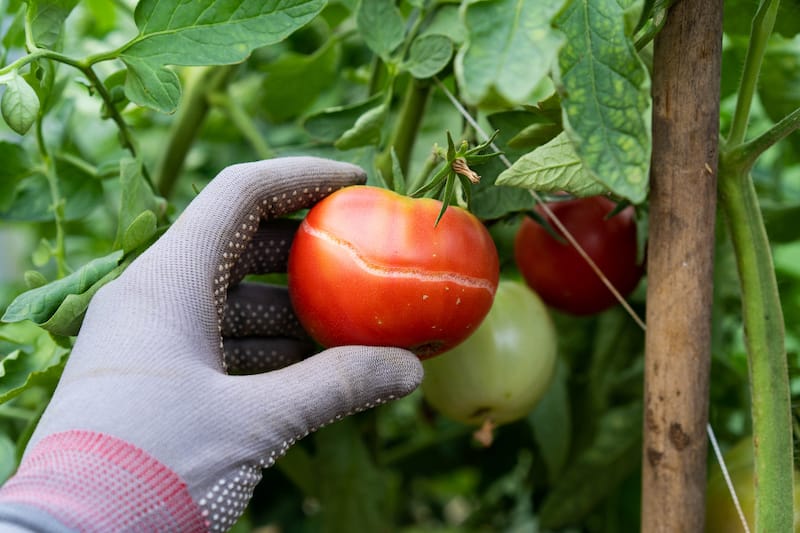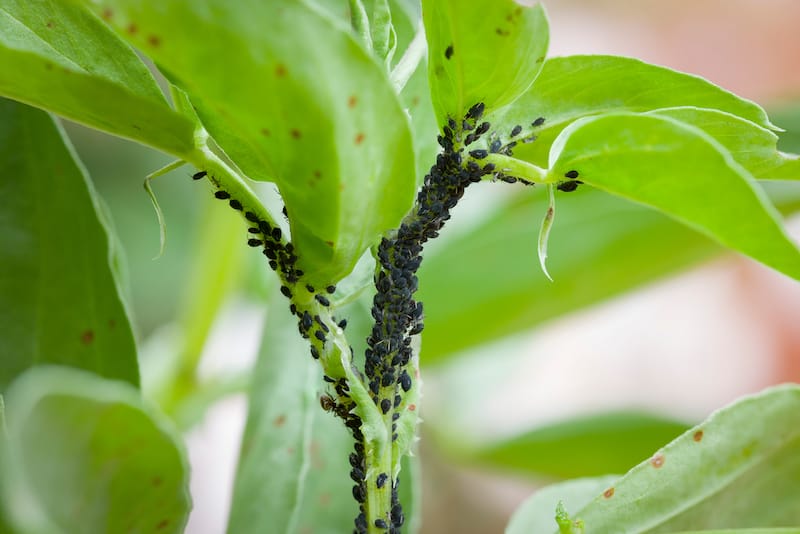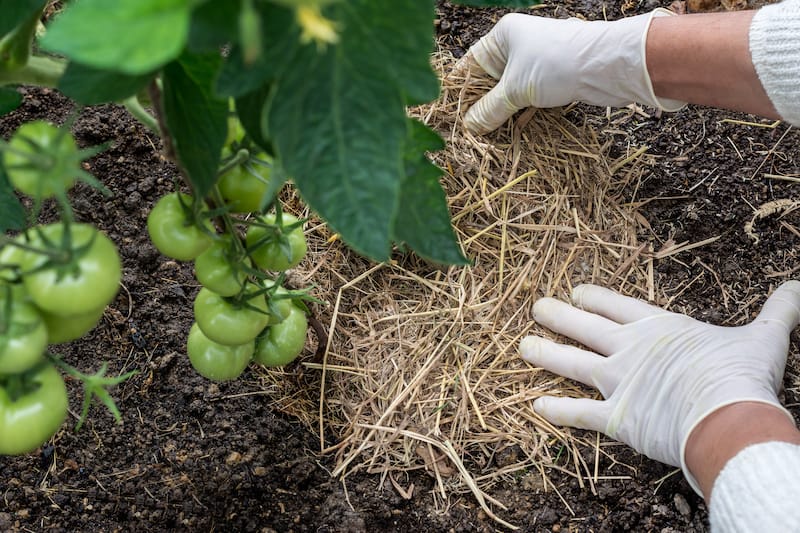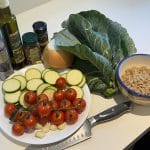Gardening Problems and Solutions: Expert Tips for a Thriving Garden
Composting In The Garden

Why Most Garden Problems Are Easier Than You Think
Every garden hits snags. Spot problems early, make a few smart moves, and keep plants thriving.
- Most problems are fixable with a few down-to-earth steps.
- Healthy soil, steady watering, and gentle pest control prevent 80% of headaches.
- Minor adjustments—such as adding mulch, adjusting spacing, or providing a touch of shade—often make the most significant difference.
Common Pest Issues and Natural Solutions
You don’t need harsh sprays to protect your harvest. Nature already handed us a toolkit.
Know the usual suspects.
- Aphids – curled leaves, sticky honeydew.
- Tomato hornworms – big green chompers; foliage disappears overnight.
- Slugs & snails – slime trails, ragged holes in tender greens.
- Whiteflies – tiny cloud when you brush the plant; yellowing follows.
- Flea beetles – pinhole peppering on young leaves.
- Ants – often “farming” aphids; a clue, not always the culprit.

Organic pest-control hacks (quick wins)
- Aphids: blast with water or a light soapy spray.
- Hornworms: handpick at dawn; look for white “rice” cocoons (that’s a parasitic wasp—leave those).
- Slugs/Snails: copper tape, dried eggshells, or a shallow beer trap overnight.
- Whiteflies/Flea beetles: neem oil on undersides; row covers for seedlings.
- Companions: Marigolds for nematodes/beetles; basil by tomatoes to deter hornworms.
Invite the good bugs.
Plant nectar-rich flowers—dill, yarrow, marigolds—and skip broad-spectrum sprays. Ladybugs, lacewings, parasitic wasps, and ground beetles will take up residence and patrol for you. A little mulch and mixed plantings give them a home base: less intervention, healthier plants.
Preventing and Managing Plant Diseases
Vigorous plants shrug off trouble. When disease sneaks in—spots, wilts, rots, mottling—rule out look-alikes first (drought stress, nutrient issues, herbicide drift). A quick soil test and a hand lens keep you from chasing ghosts.
Powdery mildew (the classic)
White, dusty coating that slows growth more than it kills.
Do this: give plants breathing room, water at the soil level (not overhead), rotate crops, and remove infected leaves early. Organic options, such as potassium bicarbonate or neem, appear to be the most effective at first glance.
Pick resilient varieties
Check seed packets and plant tags for disease codes (such as VFN on tomatoes, which indicates they can tolerate Verticillium, Fusarium, and nematodes). They won’t be bulletproof, but they’ll hold up better under stress—and that’s precisely what you want in a home garden.
Garden Problems & Solutions: Quick Reference
A fast, plain-English guide to common pests and diseases—with natural fixes you can use today.
Quick Pest Cheat Sheet
| Pest | Common Signs | Typical Host Plants | Quick Fix (Natural Solutions) |
|---|---|---|---|
| Aphids | Curling leaves; sticky honeydew | Roses, vegetables | Soapy water spray; hose blast; invite ladybugs; foil ant “farming” |
| Tomato hornworms | Large chewed leaves; green droppings | Tomatoes, peppers | Handpick at dawn; plant basil; leave parasitized worms (white cocoons) for control |
| Slugs / Snails | Ragged holes; slime trails | Lettuce, seedlings | Crushed eggshells; copper tape; shallow beer trap; evening handpick |
| Whiteflies | Tiny white cloud when disturbed; yellowing leaves | Tomatoes, cucumbers | Neem oil on undersides; yellow sticky traps; add lacewings; reduce overhead watering |
| Flea beetles | Pinhole peppering on young leaves | Brassicas, eggplant, seedlings | Row covers for seedlings; neem oil; keep soil evenly moist for faster outgrowing |
| Ants | Trails near plants; aphids often present | Various | Control aphids; disturb nests; diatomaceous earth barriers; seal honey sources |
Tip Focus on protecting seedlings first—row covers + steady moisture help plants outgrow early pest pressure.
Quick Plant Disease Cheat Sheet
| Disease | Common Signs | Typical Host Plants | Quick Fix (Natural Solutions) |
|---|---|---|---|
| Powdery Mildew | White, powdery film on leaves/stems | Cucumbers, squash, roses | Improve airflow; water at soil line; remove infected leaves; neem or potassium bicarbonate early |
| Leaf Spot (Fungal) | Brown/black spots; yellow halos; drop | Tomatoes, beans, ornamentals | Rotate crops; prune for airflow; copper or compost-tea sprays; sanitize tools |
| Blossom End Rot | Dark, sunken fruit bottoms | Tomatoes, peppers, eggplant | Keep moisture steady; mulch; add lime/gypsum if soil Ca is low; avoid excess nitrogen |
| Downy Mildew | Yellow patches above; fuzzy growth below | Basil, cucumbers, brassicas | Water mornings; increase spacing; use resistant varieties; neem as a preventative |
| Root Rot | Wilting despite wet soil; brown, mushy roots | Many veg & containers | Improve drainage; reduce watering; use well-draining mix; raise beds/pots with holes |
Tip Most fungal issues fade with **airflow + dry leaves**. Water early, at the base, and give plants elbow room.
How to Use This
Keep this page on your phone or print it for the shed. When trouble shows up, match the sign to the fix, make one change, then observe. Small moves, steady wins.
Soil Problems and Fixes
Soil is the whole ballgame. If it’s compacted, low in organic matter, or drains poorly, plants struggle regardless of how well you care for them.
Fast diagnosis → fix.
- Compaction: fork to loosen; top with compost.
- Low organic matter: add compost, leaf mold, or aged manure and keep the area mulched.
- Poor drainage: build raised beds or blend in coarse material; avoid walking on wet soil.
pH & nutrient gaps (keep it simple)
Soil pH is the gatekeeper for nutrients.
If it swings too acidic, add lime or even a sprinkle of wood ash.
If it leans too alkaline, elemental sulfur will bring it back in line.
Common signs & gentle amendments
- Nitrogen low: overall yellowing → composted manure, blood meal.
- Phosphorus low: purple stems, slow growth → bone meal, rock phosphate.
- Potassium low: weak stems, poor fruiting → kelp meal, wood ash.
- Calcium issue: blossom end rot → lime/gypsum + consistent watering.
Watering Mistakes and Solutions
Water is where most gardens go sideways. Aim for deep, infrequent watering so that the roots can reach down.
- Overwatering: yellowing, mushy roots, soil that never dries.
- Fix: water less often but deeply, improve drainage, never trap pots without holes.
- Underwatering: dry soil pulling from pot edges, crispy tips, stalled growth.
- Fix: water slowly so it soaks, mulch to hold moisture, check 2–3″ down before deciding.

Mulching and Weed Control
Mulch is the garden’s comforter: it retains moisture, nourishes the soil, and suppresses weeds.
- Straw: great for veggies; can blow—tuck it in.
- Wood chips: long-lasting; may tie up a little nitrogen at the surface—add compost for a balanced effect.
- Grass clippings: nice nitrogen boost—dry first to prevent matting.
- Leaves: free, nutrient-rich; shred or layer thinly.
Stubborn perennials? Lay cardboard under mulch as a light-blocking layer.
Environmental Challenges
- Heat & sun scorch: 30–50% shade cloth during heat spikes; water early; mulch to cool the root zone.
- Stale air: space plants, prune for better airflow, and grow vertically where possible; a small fan can help in enclosed spaces.
Special Growing Techniques
- Containers: herbs, greens, compact peppers/tomatoes do great. Always add drainage holes; feed lightly but regularly.
- Raised beds: better drainage, earlier spring warmth, and kinder on knees.
- Vertical frames: cucumbers, pole beans, peas climb happily and free up the ground.
Troubleshooting Tomatoes & Peppers
- Blossom-end rot: not a disease—calcium delivery + moisture consistency problem.
- Fix: steady watering, mulching, and moderate nitrogen application.
- Suspected calcium deficiency: check pH; add lime or gypsum; keep moisture even.
FAQ
How do I deal with pests naturally?
Rotate crops, protect seedlings with row covers, and plant flowers that feed beneficial insects. Soap or neem sprays help when pressure spikes.
What’s the easiest way to improve soil?
Add compost and keep it mulched—leaf mold or aged manure for a slow, steady boost. Consider a fall cover crop.
My plants still look sad—now what?
Test pH, check for cramped roots or shade creep, and reset watering to deep/consistent. Minor tweaks solve most slumps.
How do I manage weeds without chemicals?
Hoe early, pull small, then smother with mulch or a living ground cover—cardboard + mulch for the stubborn customers.
Share this post
Table of Contents
- Why Most Garden Problems Are Easier Than You Think
- Common Pest Issues and Natural Solutions
- Know the usual suspects.
- Organic pest-control hacks (quick wins)
- Invite the good bugs.
- Preventing and Managing Plant Diseases
- Powdery mildew (the classic)
- Pick resilient varieties
- Garden Problems & Solutions: Quick Reference
- Quick Pest Cheat Sheet
- Quick Plant Disease Cheat Sheet
- How to Use This
- Soil Problems and Fixes
- pH & nutrient gaps (keep it simple)
- Watering Mistakes and Solutions
- Mulching and Weed Control
- Environmental Challenges
- Special Growing Techniques
- Troubleshooting Tomatoes & Peppers
- FAQ
All categories
More From The Garden
Disclosure: This post may contain affiliate links. That means if you click and buy, The Bright Garden may earn a small commission, at no extra cost to you. We only recommend products we’ve vetted and believe will benefit our readers.












